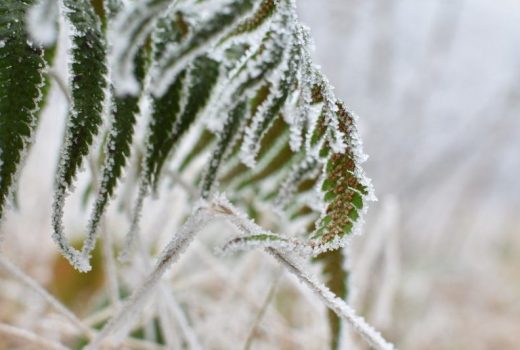Frost is disastrous for many plants. The threat of frost most often occurs overnight when the temperature goes too low enough to freeze the moisture on plant buds and leaves. Therefore, many garden plants can’t tolerate frost.
Instead of losing your plants, protect your plants by following our guide on how to protect plants from frost. In early spring, it is imperative to monitor weather conditions via TV, websites, and a weather radio. So you can prepare for the frost when predicted. This article explains different methods of how to protect plants from frost.
How to Protect Plants from Frost?
When the temperature at ground level dips below 32o F, a frost occurs. The frost becomes worse when the temperature dips even below 28o F. Many plants can tolerate a brief frost but can’t survive a hard freeze.
Here are a few practical ways to protect your plant:
1. Choose Cold-Hardy Plants
The first and foremost way to protect your plants from frost is to choose cold-hardy plants. Such plants can thrive in the cold and are known as “hardy”. On the other hand, plants that can’t tolerate freezing temperature are known as “tender”.
So, you should try to grow hardy plants during early spring such as broccoli, cabbage, carrots, lettuce, etc. If it’s crucial to grow tender plants, read on to find out how to protect plants from frost.
2. Grow Plants in Frost-Resistant Spots
You should grow seedlings in areas that are less likely to experience damaging cold. For example, placing plants by fences and walls can provide them additional protection. If structures are dark in color, it’d be much better for plants.
Because dark structures absorb heat during the day and radiate the heat during the night. This heat keeps the plants warm. Similarly, nearby shrubbery also protects the plants from light frosts.
3. Harden Off Seedlings
You must gradually expose seedlings to conditions outdoors. Otherwise, seedlings will not tolerate a sudden temperature change. This procedure is called the hardening off the plants.
You get stronger plants after this process. Such plants can withstand the vicissitudes of early spring. Start hardening the plants off at least 14 days before transplanting. Keep the plants outside during the day in warm and shady spots and bring them indoors at night.
4. Cover Plants Before Nightfall
It is crucial to cover up your tender plants before dusk during a hard frost. Otherwise, most of the stored head of the garden will be dissipated if you wait till darkness.
You can use any type of covers such as old blankets, sheets, hoops, and plastic. Even you can place containers over frost tender seedlings to protect them from frost. However, make sure that covers should extend down to the soil on each side.
5. Cover Plants with Cloches
Cloches are removable plastic or glass covers for protecting plants from cold. These are suitable for individual plants. However, some cloches are large enough to cover an entire row.
Like other covers, you should place cloches over plants before the sun goes down. And, remove the cloches in the morning when the frost has thawed.
6. Use Water Jugs
You might be thinking about how to protect plants from frost using water jugs. Well, place a plastic water jug in the sun. The jug will soak up heat during the day. Then, place the jugs around the plants and cover the plants with plastic sheets or cloches before dusk.
The warm water will keep the environment hot by releasing the heat. Water releases heat more slowly than the air and soil. Therefore, heating emitting from the water jugs will protect plants from frost.
7. Bring Potted Plants Indoors
Protection of potted plants is not that difficult as outdoor plants. However, the roots of potted plants are more affected than those planted on the grounds in the frost. That’s why potted plants are vulnerable to root damage when temperatures dip too low.
You need to bring hanging baskets and planters indoors when frost is predicted. However, you should make sure that plants don’t have any insects and are not suffering from any diseases. Otherwise, pests can infect your other indoor plants.
8. Wrap Fruit Trees
Fruit trees with think barks are susceptible to splitting when temperatures fluctuate intensely. That’s why many fruit trees can’t withstand too low temperatures. Wrapping the trunks of the tree can prevent this splitting. This splitting is commonly known as frost crack.
9. Water Before a Frost
Many of you may find it crazy that how to protect plants from frost by watering before a frost. But watering the plants before a spring frost at night protects them from freezing. How? The wet soil releases moisture into the air which raises the temperature of the environment. As a result, plants are protected from frost.
10. Avoid Frost Pockets
Frost pockets are depression in the soil where cold air drains and can’t get out. Plants that are located in the frost pockets areas suffer most from frost. Therefore, you should avoid sowing seeds in these low places.

